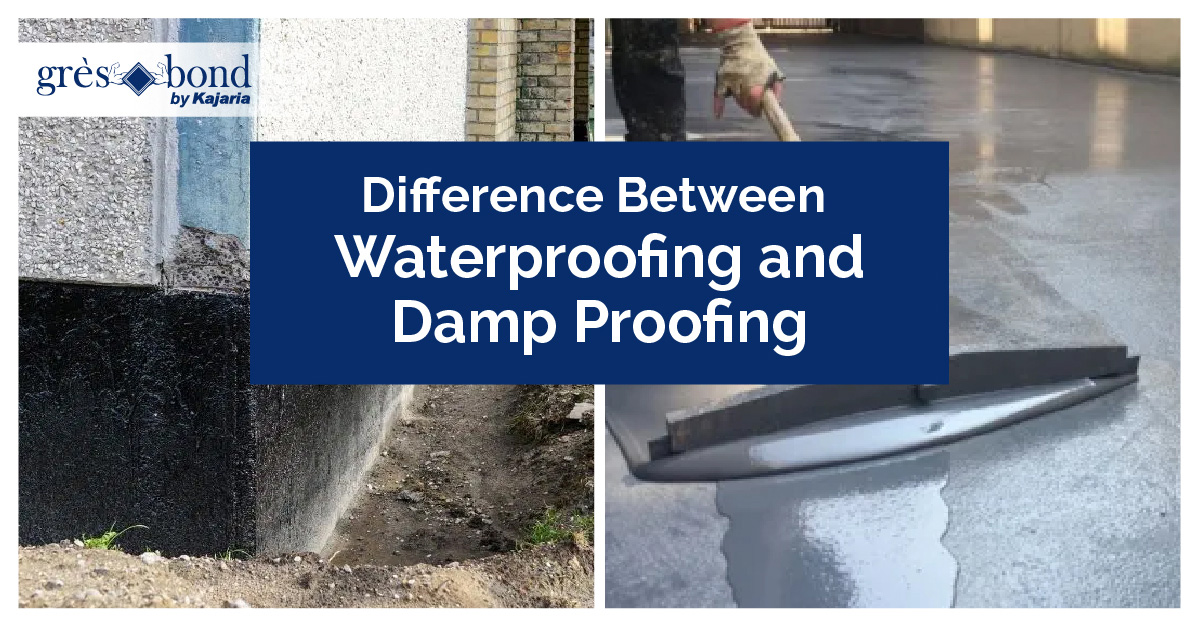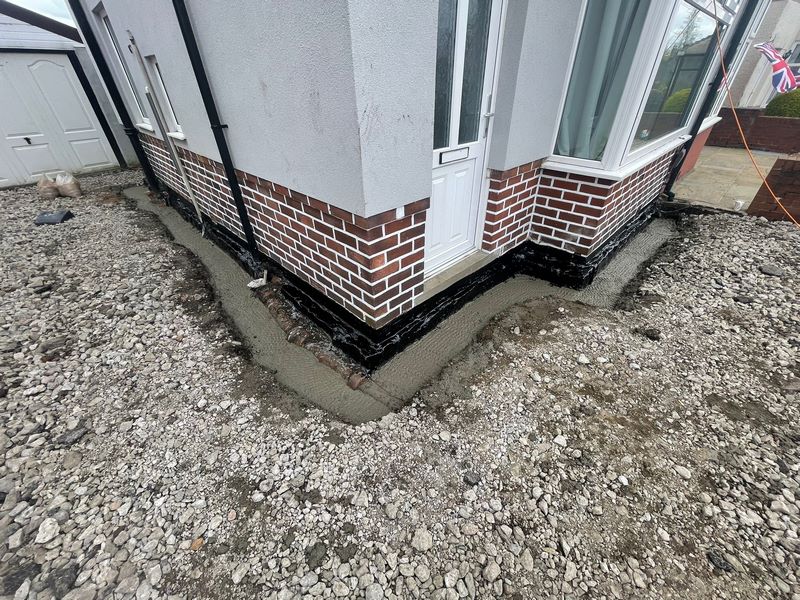Everything to know about choosing the qualified damp specialist newcastle for your property
Everything to know about choosing the qualified damp specialist newcastle for your property
Blog Article
Exploring the Numerous Strategies and Solutions for Effective Damp Proofing
Wetness in structures positions substantial difficulties to both structural honesty and interior air quality. Different strategies and services have actually arised to battle this pervasive concern. From typical damp-proof membranes to ingenious chemical treatments, each method offers one-of-a-kind advantages. Comprehending these alternatives is crucial for effective wetness control. Nonetheless, choosing the ideal option relies on specific structure conditions and requirements, prompting further expedition right into the most reliable wet proofing strategies available.
Recognizing the Reasons For Dampness
Dampness can emerge from different sources, comprehending these reasons is important for effective remediation. Commonly, wetness originates from 3 main sources: increasing wet, passing through moist, and condensation. Increasing moist takes place when groundwater travels up through porous products, such as brick or rock, commonly as a result of a lack of an effective obstacle (mould treatment newcastle). Permeating damp is commonly triggered by exterior variables, consisting of roofing system leaks, damaged seamless gutters, or harmed walls, permitting water to penetrate a home. Condensation, on the various other hand, arises from excess moisture airborne, often intensified by poor ventilation and temperature level distinctions, resulting in water droplets basing on surfaces. Recognizing these underlying issues is vital, as each sort of moisture calls for a tailored approach for remediation. Proper evaluation assists in identifying one of the most efficient remedies, inevitably guarding the structural honesty of a building and boosting interior air top quality
Conventional Damp-Proof Membranes

Chemical Damp-Proofing Solutions
Chemical damp-proofing remedies use an innovative technique to avoid moisture invasion in structures. These approaches normally include the application of liquid chemicals that pass through stonework and create a barrier versus increasing wet. Frequently used chemicals consist of silanes, siloxanes, and other water-repellent agents that respond with surface products to produce a hydrophobic layer.The application procedure normally needs drilling holes right into the wall surfaces, injecting the chemical solution, and enabling it to cure. This technique is especially useful for older structures where standard damp-proof membranes may be not practical. In addition, chemical damp-proofing can be less turbulent and much more cost-effective than extensive improvement projects.While effective, these remedies rely on correct application and ecological conditions for peak efficiency. Normal maintenance and tracking are necessary to ensure the durability of the damp-proofing therapy. Generally, chemical damp-proofing stands for a functional option for securing buildings versus moisture-related damages
Cavity Wall Building And Construction Methods
Cavity wall surface building and construction techniques use numerous benefits, specifically in dampness control and energy efficiency. By incorporating an air void in between 2 layers of masonry, these walls successfully mitigate water ingress while boosting insulation. This mix not only secures structures from dampness yet additionally contributes to reduced power usage.
Benefits of Dental Caries Walls
When thinking about reliable moist proofing methods, the benefits of dental caries walls stand apart prominently. Dental caries wall surfaces consist of 2 different layers, creating an air gap that efficiently lowers wetness infiltration. This style minimizes the threat of moisture, as the external wall serves as a barrier against rain and water ingress. Furthermore, cavity walls boost thermal insulation, which adds to energy performance by lowering warmth loss. They also give audio insulation, helping to create a quieter indoor atmosphere. The air space permits for ventilation, which aids in wetness control and reduces the likelihood of mold growth. These benefits not just improve the total convenience of a building yet likewise contribute to its long life and architectural integrity.
Moisture Control Techniques
Efficient dampness control approaches are essential in cavity wall surface building to guarantee long-term protection versus wetness. One key method includes the unification of weep holes, which assist in water drainage from the cavity, protecting against buildup. Furthermore, using breathable membrane layers can aid handle wetness degrees while allowing caught vapor to escape. Appropriate positioning of insulation is likewise vital, as it must not block drain paths. Guaranteeing that the outer leaves of the dental caries wall are created with waterproof materials boosts total resilience. Regular maintenance checks are important to identify any kind of obstructions or damage early, guarding the structure's integrity. Ultimately, a mix of these methods forms a durable defense against wetness intrusion in tooth cavity walls.
Insulation and Power Efficiency
Insulation plays a vital role in enhancing power efficiency within dental caries wall building. By including protecting products, these walls produce a thermal obstacle that minimizes heat loss and minimizes energy intake. Reliable insulation not only aids keep a steady interior temperature level but additionally mitigates the threat of moisture, as it avoids condensation within the wall surface tooth cavity. Different methods, such as making use of stiff foam boards or mineral woollen, can be used to attain ideal insulation performance. In addition, appropriate setup is necessary to ensure that gaps and voids are reduced, which can or else endanger energy efficiency. Eventually, a well-insulated dental caries wall adds substantially to overall sustainability and lowers heating & cooling costs for homeowners.
External Damp Proofing Methods
Outside wet proofing methods are important for safeguarding frameworks from moisture seepage. Two efficient methods include the application of waterproof membranes and the setup of French drains pipes. These options assist reduce water build-up and preserve the integrity of structures.
Waterproof Membrane Layer Application
While different methods exist for stopping wetness ingress, the application of water resistant membrane layers remains a highly efficient external moist proofing method. These membranes are generally made from products such as polyethylene, rubber, or modified asphalt, giving a durable barrier versus water penetration. The installment procedure entails applying the membrane layer to the outside surface areas of structures or wall surfaces, making certain total insurance coverage to avoid leaks. Correct bond and securing at joints are critical to taking full advantage of effectiveness. Water-proof membrane layers can be applied in different kinds, including fluid coverings and sheet membranes, enabling adaptability based upon the certain demands of the framework. This method not just protects buildings from moisture yet also enhances their long life and structural stability.
French Drain Installment
One efficient approach for managing groundwater and preventing moisture accumulation around a building's foundation is the setup of a French drainpipe. This drainage system includes a trench full of gravel and a perforated pipeline that redirects surface water away from the structure. Correct installation calls for cautious preparation, guaranteeing that the drain inclines away from the framework to help with suitable water circulation. Furthermore, the location of the drain is crucial; it must be positioned in areas vulnerable to pooling or excess dampness. Routine upkeep, consisting of clearing up particles from the gravel and making sure the pipeline remains unhampered, is vital for long-term effectiveness. Inevitably, a well-installed French drain can significantly decrease the danger of water-related problems in structures and cellars.
Interior Waterproofing Techniques
Inside waterproofing strategies are crucial for protecting a structure's inside from moisture infiltration and possible water damage. These methods normally include the application of specialized products and techniques developed to produce a moisture obstacle within the structure. One typical strategy is using water resistant coverings or sealants on walls and floorings, which protect against dampness from penetrating surfaces.Additionally, setting up interior drainage systems, such as sump pumps, can effectively handle water accumulation in basements and creep rooms. Another technique involves the usage of vapor barriers, which are set up to prevent dampness motion from the ground right into living spaces.Moreover, addressing any type of splits or spaces in walls or structures with suitable sealers ensures an extensive defense against water breach. By carrying out these indoor waterproofing methods, homeowner can greatly lower the threat of mold and mildew growth, architectural damages, and various other moisture-related problems. Appropriate execution of these strategies is vital for long-lasting security website and structure stability.
Regular Maintenance and Examination Practices
Routine maintenance and inspection practices are vital for assuring the long-lasting efficiency of damp proofing options in any building. Regular checks make it possible for homeowner to recognize very early indications of moisture intrusion, such as peeling paint, mold and mildew growth, and mildewy smells. These indicators can signify underlying concerns that require prompt attention.Inspections must be conducted a minimum of yearly, concentrating on prone locations like cellars, creep spaces, and exterior wall surfaces. During these assessments, property owners should analyze sealers, water drainage systems, and ventilation to verify they function correctly.Additionally, preserving rain gutters and downspouts is vital, as clogged systems can result in water buildup near the structure. Applying a normal maintenance routine, in addition to timely repair services, can significantly expand the life-span of moist proofing actions and shield the structural stability of the building. Aggressive measures ultimately add to the overall health and wellness of the living atmosphere.
Often Asked Inquiries
The Length Of Time Does Damp Proofing Typically Last?
The duration of damp proofing effectiveness differs, commonly lasting between 20 to half a century. Factors such as application top quality, ecological problems, and upkeep practices substantially influence the longevity of the wet proofing therapy.

Can I Damp Evidence My Home Myself?
The private contemplated the usefulness of DIY damp proofing. With proper research study and the right products, it is possible. Nevertheless, they likewise recognized the significance of professional assistance to ensure lasting effectiveness and prevent future issues.
What Are the Indications of Inadequate Damp Proofing?
Indicators of inadequate wet proofing include consistent musty smells, noticeable mold and mildew growth, peeling off paint, moist patches on wall surfaces, and wood degeneration - damp proofing newcastle. Homeowners must deal with these problems promptly to stop more damage and wellness issues
Does Damp Proofing Affect Indoor Air Quality?

Just How Much Does Specialist Damp Proofing Cost?
Specialist wet proofing expenses differ considerably, generally ranging from $1,000 to $5,000 relying on the property's dimension, the degree of the wet issue, and selected methods. Each scenario calls for a customized assessment for exact pricing. Generally, wetness originates from three primary sources: increasing wet, passing through moist, and condensation. When considering reliable damp proofing approaches, the benefits of tooth cavity walls stand out prominently. Exterior damp proofing methods are crucial for securing structures from wetness infiltration. While various approaches exist for avoiding dampness access, the application of waterproof membrane layers continues to be a very effective exterior damp proofing technique. Indicators of inadequate damp proofing include consistent mildewy odors, visible mold and mildew development, peeling off paint, moist spots on walls, and wood degeneration.
Report this page